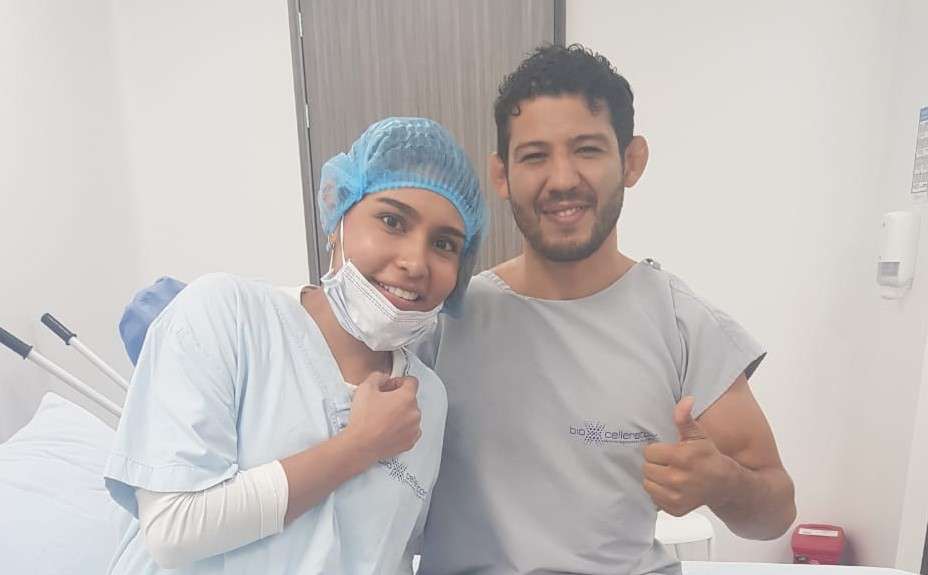
Osteoarthritis (OA) is one of the most prevalent forms of arthritis, affecting more than 58 million people in the United States alone. Knee osteoarthritis is an increasingly common problem among seniors, with roughly one in ten men and one in eight women aged sixty years or older suffering from symptomatic pain due to the condition.
OA not only causes physical discomfort at its most extreme, it can also greatly reduce quality of life; those with knee OA often have difficulty getting around, making even simple tasks like going for a walk become challenging. Traditional treatments such as total knee arthroplasty provide relief from symptoms, but can be expensive and invasive.
Let’s explore a promising new treatment option—mesenchymal stem cells (MSCs)—that has been shown to be both safe and effective in treating OA. MSCs are multipotent adult stem cells that have the potential to differentiate into different cell types, including cartilage cells. They have been used for many years in regenerative medicine for their ability to modulate immunological responses and reduce inflammation.
Numerous studies have also demonstrated a link between the number of MSCs present in subchondral bone and the degree of OA severity. Furthermore, numerous clinical trials have proven that MSCs are a safe treatment option with few side effects.
Despite these successes, some questions remain regarding their efficacy, mechanism of action, dosing, and use of adjuvants. To address these issues, researchers recently conducted a study, Phase II multicenter randomized controlled clinical trial on the efficacy of intra-articular injection of autologous bone marrow mesenchymal stem cells with platelet rich plasma for the treatment of knee osteoarthritis, to assess the efficacy of intraarticular injection of bone marrow-derived MSCs (BM-MSCs) with autologous platelet-rich fibrin matrix (PRGF®) as a treatment for OA in humans.
Results of the Study
Recently researchers tested the efficacy of Platelet-Rich Plasma with Fibrin and Bone Marrow-Derived Mesenchymal Stem Cells. The study was conducted using a randomized controlled trial method. Patients were assigned to either the PRGF® or BM-MSC and PRGF treatment group.
Patients in the control group were given PRGF® as treatment, while those in the BM-MSCs group were administered with autologously cultured BM-MSCs before being injected with PRGF®. The purpose of this investigation was to evaluate the efficacy and safety of combining BM-MSCs plus PRGF® compared to a separate injection of PRGF® alone.
26 patients completed follow-up in the PRGF® group, while 24 patients completed follow-up in the BM-MSC plus PRGF® group. Patients had similar baseline characteristics prior to treatment, including similar age averages, body mass index measurements, and levels of osteoarthritis according to the Kellgren–Lawrence scale.
Patient evaluation was performed using X-ray projections, Magnetic Resonance Imaging (MRI), Visual Analog Scale (VAS), and the Likert version of the Western Ontario and McMaster Universities Osteoarthritis Index (WOMAC). The study showed that no serious patient adverse events or complications from the procedures or treatments were found.
The assessment of pain by VAS has shown an increase in patient comfort when compared with the baseline results. Those individuals who received the Bone Marrow-derived Mesenchymal Stem Cells in combination with Platelet-Rich Growth Factor saw a significantly greater improvement. Their VAS scores improved from 5.3 to 3.5, while the control group only saw improvement in VAS scores from 5 to 4.5. Clearly, this innovative procedure is demonstrating remarkable potential for improving pain management.
The study found similar results in the WOMAC scores. The stem cell therapy group saw a 37.3% improvement in their WOMAC scores, while the PRP group only saw a 23.4% improvement. The fact that combining these two treatments could potentially offer superior outcomes for OA patients is an important insight into how this often debilitating condition can be better managed.
As such, future studies should focus on exploring exactly why this combined approach appears to offer enhanced relief from OA symptoms. Additionally, larger sample sizes are needed for further confirmation regarding these promising findings concerning stem cell therapy as an effective adjuvant therapy for OA sufferers.
The results from this study are promising and suggest that BM-MSCs may be an effective form of treatment for osteoarthritis when injected directly into the joint along with an autologous PRGF® matrix. More research will need to be done to determine how best to utilize MSCs as part of a comprehensive osteoarthritis treatment plan.
However, these findings do provide hope that this new approach may offer relief from symptoms for those suffering from osteoarthritis without resorting to invasive or expensive treatments such as total knee arthroplasty. For patients looking for non-invasive ways to alleviate pain caused by osteoarthritis, mesenchymal stem cell therapy may be worth exploring further.


